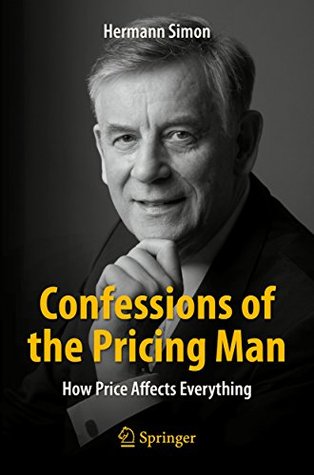More on this book
Community
Kindle Notes & Highlights
Read between
October 6 - October 26, 2019
Ultimately the customer is only willing to pay for the value he or she gets. The challenge for any seller is to find out what this perceived value is and then price the product or service accordingly.
Customer satisfaction is the only way to maximize long-term profits.
“price takers.” We had to accept the set price, whether we liked it or not.
never run a business in which you have no influence on the prices you charge.1
Robert J. Dolan and Thomas T. Nagle
Strategies and Tactics of Pricing,
Power Pricing
Dan Nimer, the man who called himself a price consultant.
Price Management
Manage for Profit, not for Market Share,
A critical part of these triumphs is the ability to anticipate future trends and estimate their impact.
Pricing is always a reflection of how people divide up value.
Everyone creates and consumes value.
We are constantly making decisions about whether something is worth our money, or trying to convince others to part with their money. That is the essence of pricing.
Prices are the central hinges of a market economy.
every dollar of revenue and profit that a company generates is the direct or indirect result of a price decision.
managers think that aggressive prices help their business. But is this really true?
There is always one “right” price or price structure and a multitude of “wrong” ones. The Russians have a saying which sums this up: “In every market there are two kinds of fools. One charges too much,
the other charges too little.”
you need to strike the right balance between value and money.
“value to customer.”
The price a customer is willing to pay, and therefore the price a company can achieve, is always a reflection of the perceived value of the product or service in the customer’s eyes.
only the subjective (perceived) value of the customer matters. The objective value of the product or other measures of value,
do not matter intrinsically.
Literally speaking, price and value are one and the same.
It leaves managers with three tasks:
Create ...
This highlight has been truncated due to consecutive passage length restrictions.
Communicate value:
Retain value:
the quality you bought endures long after you have forgotten the price.
“That is the worst and yet easiest error. Better be cheated in the price than in the quality of goods.”
The challenge, of course, is that we tend to appreciate the value of advice only with the benefit of hindsight.
The time spent on the solution often has little correlation with its quality.
value alone does you little good unless you can communicate it successfully.
second-order effect s
intangible benefit s.
This is a common example of a second-order effect . By keeping the drivers cool and comfortable (first order) the product showed its true value by keeping them safer and keeping them healthy and on the job (second-order effect).
Two of the most powerful intangible benefits we willingly pay for every day are convenience and peace of mind.
Whenever possible, you should try to communicate value using hard data, especially in a business-to-business situation.
Only perceived value creates willingness to pay
Pricing played a decisive role in the spectacular success of the 2012 Olympic Games in London.
The digits of the prices themselves were designed to send a message
“Pay Your Age”;
there were absolutely no discounts.
This sent the clear signal about value: the tickets and the events were worth their price.
The organization relied very heavily on the Internet both for communications and sales
The London ticket team’s work demonstrated that the powerful combination of high perceived value and excellent communication can drive higher willingness to pay . The following case is even more spectacular.
two-dimensional pricing scheme,
In economic terms, the most important role price plays is in creating a balance between supply and demand


